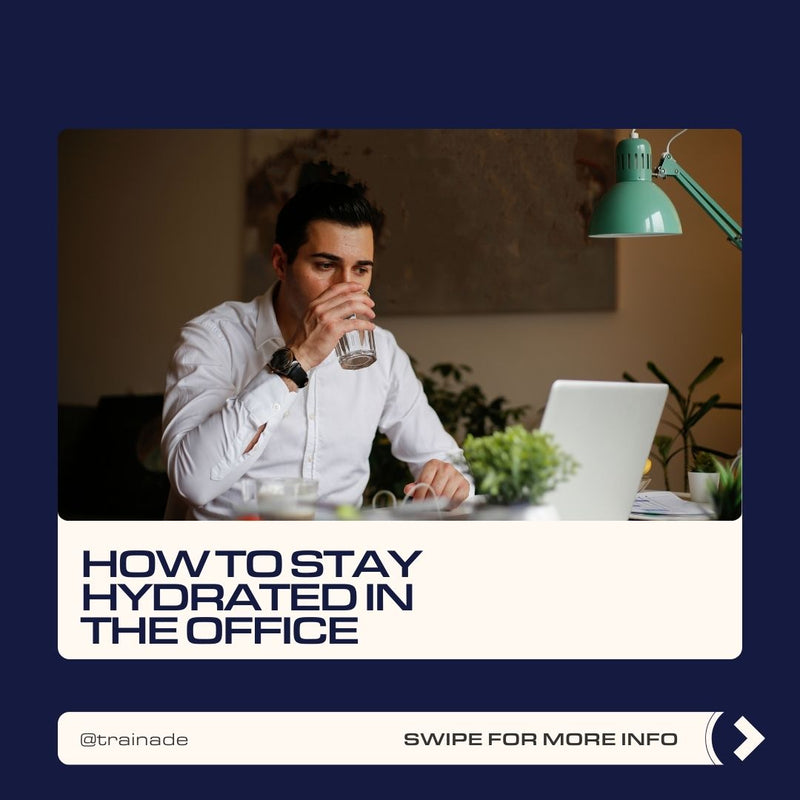How To Prevent Overheating When Training In The Summer
There’s nothing quite like training in the Aussie summer. The early morning wake ups to beat the heat, the humidity once the sun comes out, the sting as sweat trickles from your forehead into your eyes. If you know then you most definitely know working out in the Aussie summer is a different beast.
The crazy thing about training this time of year is that we all appreciate how much harder it is, but very few of us understand why that is. This is important because your best defense against the Aussie sun is to understand what is going on in your body and proactively prevent it.
Understanding the physiological mechanisms behind dehydration and overheating is crucial for preventing heat-related illnesses and ensuring you can continue to stay active in the summer, even when the temperatures are soaring.
Firstly, the Science of Thermoregulation
The human body maintains a core temperature of approximately 37°C (98.6°F) through a process known as thermoregulation. This temperature is maintained strictly by our body as it is the ideal temperature for our body to operate optimally. The best way to think about it is like the three littles bears porridges, it can’t be too cold, nor can it be too hot, it needs to be just right.
This ‘just right’ balance is achieved by ‘thermoregulation’ which describes how our body dissipates (removes) heat and the main way we do this is through sweating. Sweating occurs when our core body temperature increases just a small amount. This increase in core body temp causes the blood vessels near the skin's surface to widen and move fluid through the sweat gland onto the surface of the skin.
This fluid is then evaporated into the environment, and this evaporation of the liquid on your skin to a gas in the air causes a cooling effect on your body. When you multiply this action over millions of sweat glands covering the body you get a pretty effective cooling mechanism that can lowers core body temperature back to normal ranges.
Now, here is where things get interesting. In order to effectively sweat we must lose fluid, which leads to dehydration, but if we are constantly exposing ourselves to a hot environment, ie training outside or in a hot gym, then our body will not only continue to sweat and become further dehydrated, but it will continue to overheat as it struggles to cool.
A Breakdown of Overheating
Overheating will generally occur in two parts; the body's thermoregulatory mechanisms become overwhelmed due to being exposed to a hot environment (think sitting in a sauna or exercising in a hot gym), and the subsequent dehydration that occurs due to this overheating then leads an inability of the body to continue regulating heat. This last point is important so lets explore it a little more.
As dehydration sets in, our blood volume decreases, why does that matter? Because remember to sweat (and cool) we need to move fluid from our sweat gland to the skin? That fluid comes (indirectly) from your blood. So, the more we sweat the more we lose the fluid that we need to keep sweating!
In summary, if we are training in a hot environment, the following two scenarios will occur. Our core body temperature then begins to rise above the normal range, we start to sweat, and our core body temperature will either continue to rise (if the heat exposure is too extreme) or it will cool (if we can effectively manage it). If it continues to rise then that will lead to a cascade of physiological responses that can progress to serious conditions such as heat exhaustion and heatstroke.
Heat Exhaustion vs. Heatstroke
Heat exhaustion is an early stage of overheating, characterized by symptoms like heavy sweating, weakness, dizziness, nausea, and muscle cramps. The body’s core temperature may rise but typically remains below 40°C (104°F). If untreated, heat exhaustion can escalate to heatstroke, a life-threatening condition where the core temperature exceeds 40°C, leading to impaired brain function, confusion, unconsciousness, and potential organ failure. Heatstroke requires immediate medical intervention to prevent severe complications or death.
The crazy thing about this is that many athletes (both recreational and professional) do not understand this and routinely experience the symptoms of heat exhaustion during training sessions in the summer. Personally, I have consulted with clients who have experienced it from every sport from MMA to marathon running to CrossFit to tennis to a HIIT workout at the local gym. When the weather is hot outside, everyone is at risk!
The next question is, how do we prevent this?
The Role of Hydration in Preventing Overheating
There are two ways to prevent overheating; managing cooling and effective hydration.
Cooling Strategies
I like to discuss these as pre, during, and post and you can decide which of them work best for your situation!
Pre-exercise cooling strategies include; having a cool shower, spending 2-3 minutes in an ice bath, hydrating your body with water and electrolytes and even consuming a frozen drink or ‘ice slurry’ on the way to training (to drop your core body temp during).
During-exercise cooling strategies include; wearing weather-appropriate clothes (including light colours if in the sun), sun protection, having access to ‘cooled clothes’ ie dipping your shirt into a bucket of ice water, having a fan or air conditioner present in the workout space, using a spray bottle to help with evaporation, consuming cool/ice drinks regularly during your training.
Post-exercise cooling strategies include; taking a cool shower or cold water immersion can help reduce core body temperature if you have spent time training in the heat.
Heat acclimatization is also an effective strategy that can be used to help you better manage exercising in the heat, however, an individual protocol should be designed for you by a qualified health professional.
Effective Hydration
As discussed, proper hydration plays a critical role in maintaining the body's thermoregulatory efficiency. Water is essential for maintaining blood volume, supporting the cooling effects of sweating, and ensuring cellular functions remain optimal.
During the Aussie summer, with temperatures frequently exceeding 40°C, the risk of dehydration increases dramatically. Therefore, proactive hydration is essential to prevent the onset of heat-related illnesses.
Strategies for Staying Hydrated
- Regular Fluid Intake: We recommend that athletes consume 45ml/kg or fluid per day during the summer months and monitor their bodyweight before and after training to ensure they have replaced the fluid lost from sweat. This helps maintain plasma volume and sweat rates, crucial for effective thermoregulation.
- Oral Rehydration Solutions: Consuming oral rehydration solutions regularly during your training session allows your body to better retain the fluid you consume. Drinks such as Trainade Hydration have been specifically designed to replace fluid and electrolytes in a way that maintains fluid volume and keeps thermoregulation optimal.
- Monitoring Urine Color: Urine color is a practical indicator of hydration status. Pale yellow urine typically indicates adequate hydration, while darker shades suggest dehydration and the need for increased fluid intake. Make sure to start your training session with appropriately hydrated urine colour.
- Limiting Diuretics: Substances like alcohol increase urine output, leading to further fluid loss. Moderating the intake of these diuretics, particularly during extreme heat, can help maintain hydration levels.
- Hydrating Foods: Foods with high water content, such as watermelon, cucumbers, and oranges, contribute to overall fluid intake while providing essential nutrients that support hydration and energy levels. These should be incorporated into your daily diet to help you stay hydrated throughout the day.
Conclusion
Hydration and cooling strategies are key if you want to prevent overheating while training during the Australian summer. By understanding the scientific principles of thermoregulation and the impact of dehydration on the body, you can take proactive steps to protect yourself from heat-related illnesses.
Not only is this going to ensure that your training performance is maintained, it will help you with staying healthy and safe during the hottest months of the year. Happy training!




